The capital of Malta has undergone a transformation that has placed it among the liveliest and most intriguing spots on the island.
If your last visit to Malta was a few years back, you’ll be surprised at how much it’s changed. Despite being the capital of Malta, and a UNESCO World Heritage site filled with treasures old and new, there was a palpable sense of dissolution and neglect that persisted up until a few years ago. Some may say it took the crowning of the city as European Capital of Culture for 2018 for a concentrated effort to be made to give Valletta the blood transfusion it desperately needed. But whatever it is, it worked.
Today, the city is bustling day and night, a thriving metropolis in the morning and a place to drink, dine and socialise in style when the sun sets. Intriguing coffee shops and exquisite bars can be found in the unlikeliest nooks and crannies, while world-class restaurants delight patrons of all tastes. For a city that’s 451 years old, it’s looking very young and vital – and of course, the historical treasures that make Valletta one of the finest hubs of baroque architecture are still there, better than ever, after having been carefully tended to.
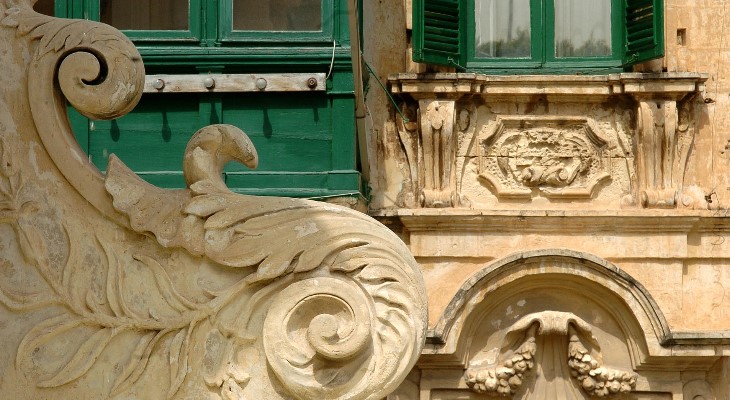
Camilla Morandi - viewingmalta.com
The city is ultra-accessible through public transport, with frequent buses passing through nearly every locality. However, once you’re inside, exploring on foot is the way to go – its surface area covers less than a kilometre squared altogether. Once you cross the bridge leading into Valletta, the sight that greets you first is Renzo Piano’s famous City Gate project, which was concluded in 2015. The project included the construction of a new, striking parliament building, and the transformation of the Royal Opera House, which was heavily bombed during World War II, into an open-air theatre known as Pjazza Teatru Rjal, where plays, concerts, musicals and other performances are now frequently held.
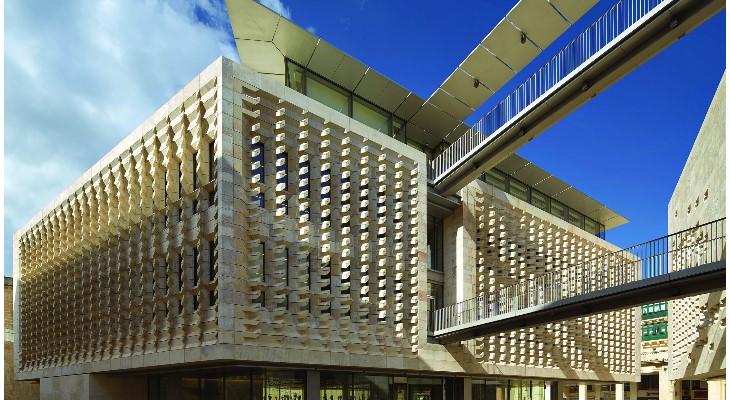
Parliament House - Grand Harbour Regenaration Corporation
Whatever you do, do not pass up the opportunity to visit the awe-inspiring St John’s Co-Cathedral, which looks like a stoic fortress on the outside and opens up to reveal an interior that screams the praises of high baroque, a hymn to excess by Mattia Preti. It houses the only painting that the infamously temperamental Caravaggio ever signed, The Beheading of St John the Baptist. The co-cathedral’s museum also contains several art objects, including the Flemish Tapestries designed by Peter Paul Rubens.
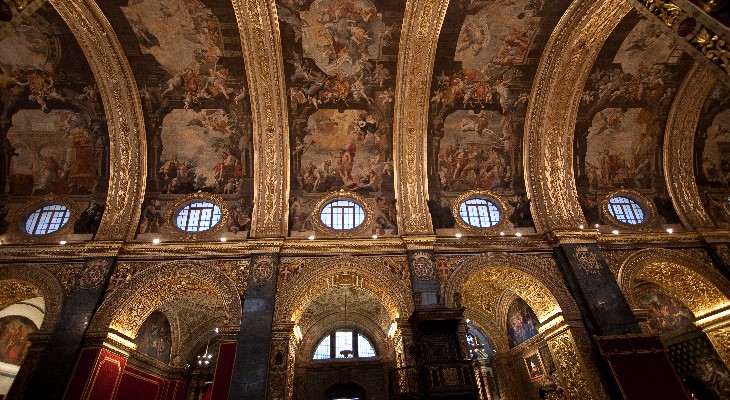
St John’s Co-Cathedral - Wouter van de Weerd/Viewing Malta
Valletta’s main thoroughfare, Republic Street, is full of shops, restaurants and cafés, including the iconic Caffé Cordina. No, that’s not an overstatement – where else will you find a café so richly gilded, decorated with paintings by Giuseppe Calì, as well as an awe-inspiring Murano glass chandelier? And that’s just the inside. Under the watchful eye of Queen Victoria in Pjazza Regina, locals, lawyers, office-workers and tourists alike sit in the sunshine and enjoy some excellent coffee along with traditional Maltese nosh, such as pastizzi (cheese or pea cakes) or qassatat (small pies).
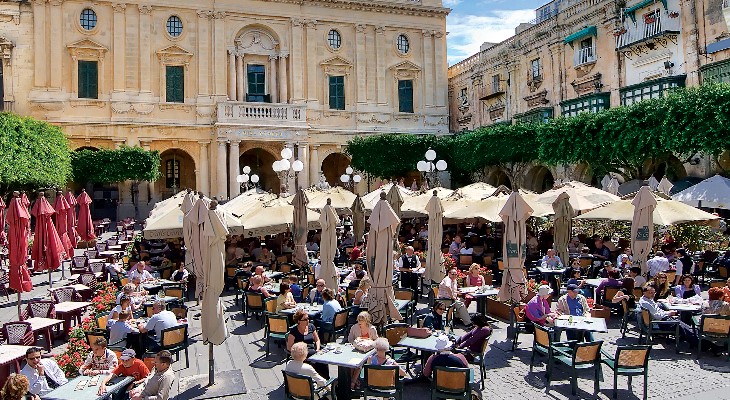
Piazza Regina - Viewing Malta
A city this enamoured with the past has no shortage of museums and sites of historical interest. The Palace State Rooms house an armoury, as well as the only complete set of 18th-century French Gobelins tapestries in the world. Meanwhile, Casa Rocca Piccola is a 16th-century stately home that looks like it was preserved in amber. It belongs to the ninth Marquis de Piro, who is still its permanent resident. Another museum that’s certainly worth a visit is the National Museum of Archaeology – besides its stunning collection of prehistoric artefacts, its Grand Salon, with its richly painted walls and wooden-beamed ceiling, is a wondrous sight.
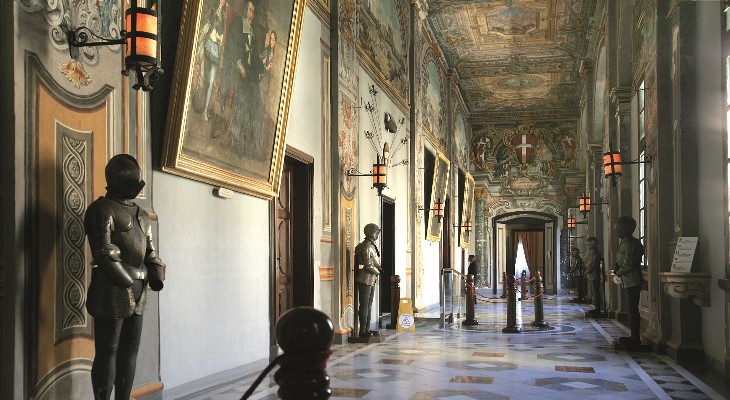
Grandmaster's Palace - Viewing Malta
One of the most interesting aspects of the regeneration of Valletta is the second coming of Strait Street. In colonial times, the long, narrow road used to be Valletta’s version of a red-light district, seedy and grubby, and populated by some of the city’s most unsavoury characters. It is unrecognisable now – although great care has been taken not to whitewash its racy past too much, it’s now chock-a-block with chic restaurants and specialty bars. Another part of Strait Street, known as The Gut, has undergone a reconstruction of its heritage bar and restaurant facades, giving its traditional look a chic twist.
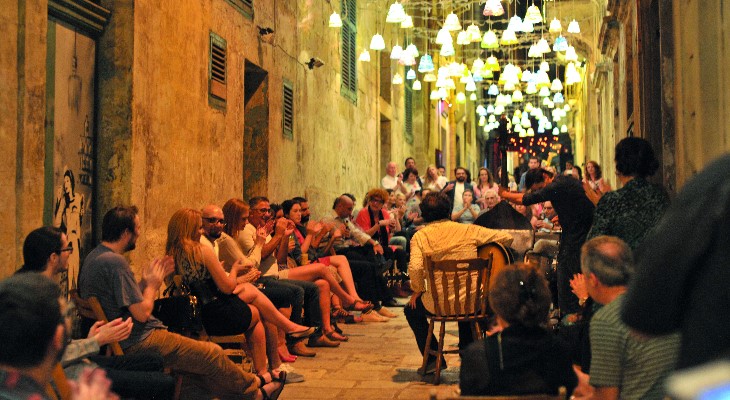
Strait Street
Valletta is also refashioning itself into a mecca for dedicated shoppers. Although Sliema – which you can reach in a heartbeat thanks to the speedy ferry – remains the hotspot for high street and designer brands alike, Valletta is picking up the pace once again. It is also a fantastic place to shop for unique, made-in-Malta souvenirs, from silver filigree jewellery to hand-made soap to designer garments. Whatever it is you’re looking for, it’s probably hidden in one of its curious streets, just waiting to be discovered.